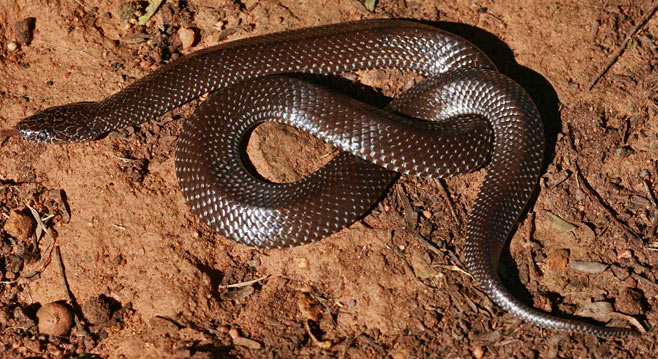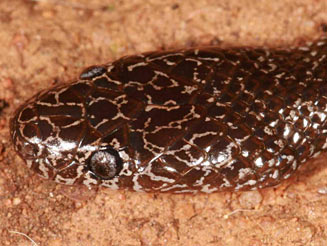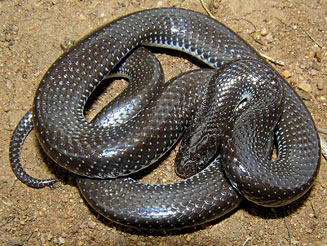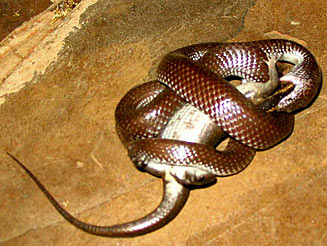|
Lycophidion capense (Common wolf snake, Cape wolf snake)
Gewone wolfslang, Kaapse wolfslang [Afrikaans]
Life >
Eukaryotes
>
Opisthokonta >
Metazoa
(animals) > Bilateria > Deuterostomia >
Chordata >
Craniata > Vertebrata (vertebrates) > Gnathostomata (jawed vertebrates) >
Teleostomi (teleost fish) > Osteichthyes (bony fish) > Class:
Sarcopterygii (lobe-finned fish) > Stegocephalia (terrestrial vertebrates) >
Tetrapoda
(four-legged vertebrates) > Reptiliomorpha > Amniota >
Reptilia (reptiles) >
Romeriida > Diapsida > Lepidosauromorpha > Lepidosauria >
Squamata > Serpentes
(snakes) > Family: Colubridae > Subfamily:
Boodontinae > Genus:
Lycophidion
 |
|
Lycophidion capense (Common wolf snake, Cape wolf snake),
Gauteng, South Africa. [D. Koen ©, from
SARCA Virtual Museum] |
 |
 |
|
Close-up of head of the above snake. [D. Koen ©, from
SARCA Virtual Museum] |
Lycophidion capense (Common wolf snake, Cape wolf snake),
Northern Cape, South Africa. [B. Maritz ©, from
SARCA Virtual Museum] |
Identification
The Common wolf snake can be identified by its black or
brown colouration, white speckling, a flattened head and a nocturnal lifestyle.
It grows to an average length of 40 cm but may reach up to 64 cm in length.
Distribution and habitat
This snake is widespread and is found throughout the
eastern half of South Africa (however two populations exist in the Western
Cape), it is also present in nearly all of southern and central Mozambique, all
of Zimbabwe, parts of Botswana and a significant portion of northern Namibia.
Its is present in nearly all habitats but is most commonly found in lowland
forest and fynbos.
Food
Eats lizards (including geckos and skinks) and other
snakes.
 |
|
|
Cape Wolf Snake feeding on what appears to be a
Montane speckled skink (Trachylepis punctatissima), Northern
Cape, South Africa. [D. Maguire ©, from
SARCA Virtual Museum] |
|
Predators, parasites and disease
Eaten by other snakes.
Reproduction
Oviparous (egg-laying)
Longevity
The lifespan of this snake is likely to be between 15 and
20 years.
Medical importance
Non-venomous and not dangerous to man and not likely to
bite.
Links
References
-
Broadley, D.G. 1983. FitzSimons' Snakes of Southern
Africa. Delta Books, Johannesburg.
-
Marais, J. 2004. A Complete Guide to Snakes of
Southern Africa. Struik Publishing, Cape Town.
|
